
History
IS IMPORTANT
Explore
Search for a specific event or composer, or view all events from a season using the dropdown menu.
SEASON
- 2008 June
- 2009 June
- 2010 June
- 2011 June
- 2012 January
- 2012 June
- 2013 January
- 2013 June
- 2014 January
- 2014 June
- 2015 January
- 2015 June
- 2016 December
- 2016 January
- 2016 June
- 2017 January
- 2017 June
- 2017 March
- 2018 January
- 2018 June
- 2019 January
- 2019 June
- 2020 January
- 2021 June
- 2022 January
- 2022 June
- 2023 January
- 2023 June
- 2024 January
- 2024 June
- 2025 August
- 2025 January
- 2025 June
- 2026 January
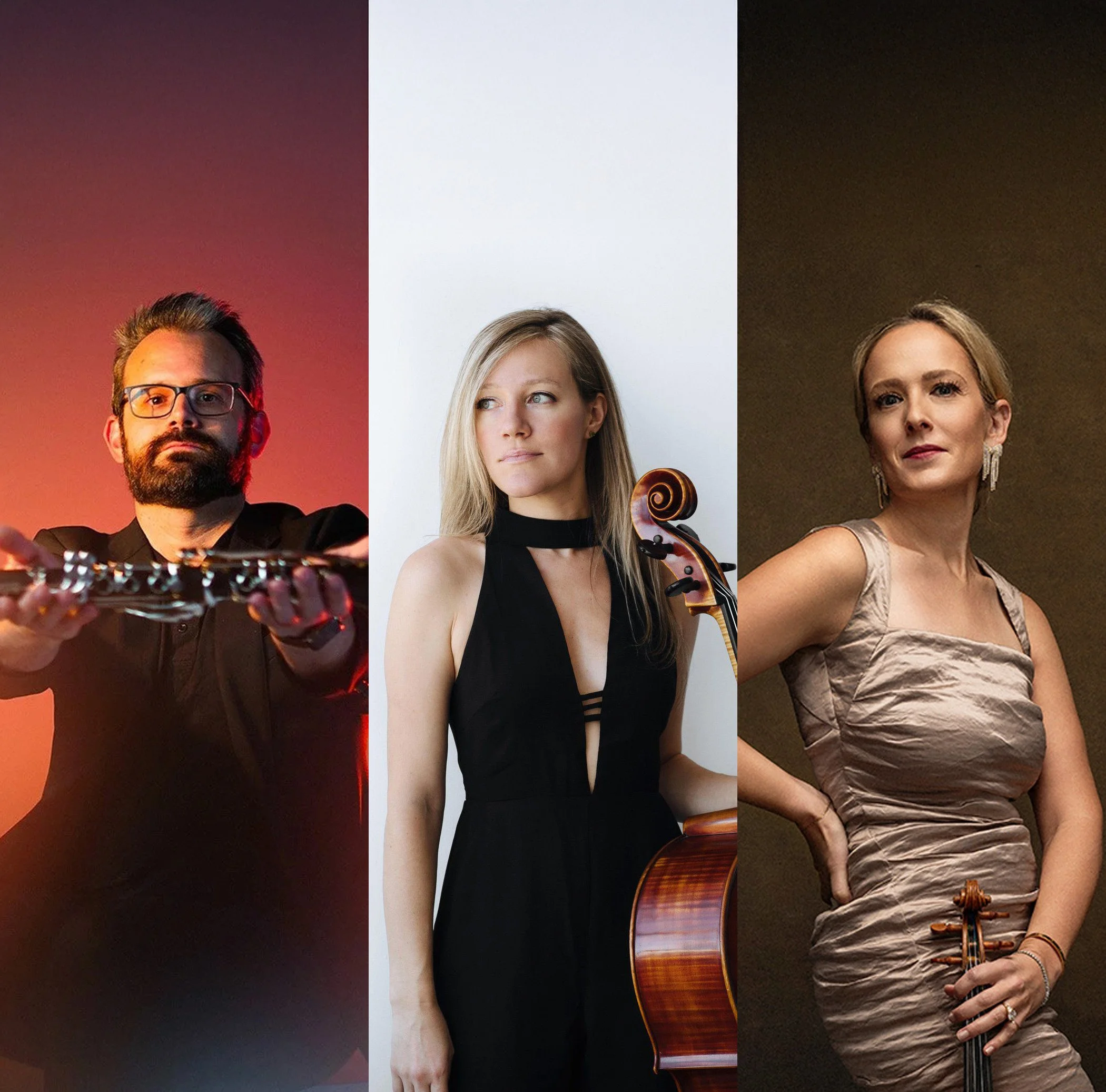
Special Event: Chatter
Chatter makes their WWCMF debut with music by J.S. Bach, Benjamin Britten, Mozart, Jessie Montgomery, and Paul Wiancko for violin, cello, and clarinet. Based in Santa Fe, Portland (OR), and New York City, the musicians of Chatter believe deeply in the power of chamber music to foster connection and create community. Each musician tends and curates a local series in their respective hometown. By linking these series, sharing ideas, and collaborating in performance, Chatter eschews viral meme-culture in favor of word of mouth. In fact, it is possible to have a national network just by talking to one another. And there is no place better than Walla Walla, a city that boasts perhaps the best word-of-mouth “grapevine” in the nation, to revel in the power of word of mouth.
Cellist Laura Metcalf is no stranger to WWCMF. This special performance outside the Festival’s traditional January and June Seasons marks Laura’s third time performing on the WWCMF stage. James Shields and Margot Schwartz join the Festival for the first time. WWCMF is delighted to return to the downtown locale of so many past January and June collaborations, House of Smith Wines.
Doors open at 6 PM.
All works will be announced from the stage.
A setlist will be published here and on social media after the performance.
Artists: Laura Metcalf, cello; Margot Schwartz, violin; James Shields, clarinet

Special Event: Vivaldi’s Four Seasons
Antonio Vivaldi’s Four Seasons — four violin concertos, each conceived around a distinctive seasonal sonnet — are among the most famous pieces of Western Classical Music ever penned. As purely instrumental works, these pieces are an early example of programmatic music, or music that tells a story.
Tonight, the stories are told by four violinists, Artur Girsky, Natasha Bazhanov, Maria Sampen and Timothy Christie. Each will take a solo turn, and each will play within the accompanying quartet, resulting in violas and violins flying in all directions like the famous North Wind that brings the whole cycle to a close.
Doors open at 5:30 PM.
Antonio Vivaldi (1678-1741)
Concerto No. 1 in E major, Op. 8, RV 269, La primavera (Spring)
I. Allegro
II. Largo e pianissimo sempre
III. Allegro pastorale
Concerto No. 2 in G minor, Op. 8, RV 315, L'estate (Summer)
I. Allegro non molto
II. Adagio e piano – Presto e forte
III. Presto
Intermission
Concerto No. 3 in F major, Op. 8, RV 293, L'autunno (Autumn)
I. Allegro
II. Adagio molto
III. Allegro
Concerto No. 4 in F minor, Op. 8, RV 297, L'inverno (Winter)
I. Allegro non molto
II. Largo
III. Allegro
Artists: Natasha Bazhanov, violin; Timothy Christie, violin/viola; Artur Girsky, violin; Rowena Hammill, cello; Maria Sampen, violin/viola

Festival Series 4: Quince Vocal Ensemble & Courtney Bryan
Courtney Bryan (b. 1982)
Requiem
for treble vocal quartet, clarinet, trumpet, trombone, tuba and percussion
I. All go to the same place; all come from dust, and to dust all return.
II. Listen, I will tell you a mystery! We will not all die, but we will all be changed…
III. The Lord is my shepherd, I shall not want…
Pie Jesu Domine, dona eis requiem. Dona eis requiem sempiternam.
Kyrie eleison. Christe eleison. Kyrie eleison.
IV. [no text]
V. See, the home of God is among mortals…
Intermission
César Fanck (1822-1890)
Sonata for Violin and Piano in A Major (1868)
I. Allegretto ben moderato
II. Allegro
III. Recitativo-Fantasia. Ben moderato — Molto lento
IV. Allegretto poco mosso
Artists: Winston Choi, piano; James Doyle, percussion; Billy Ray Hunter, trumpet; Paul Mergen, tuba; Quince Vocal Ensemble; Maria Sampen, violin; Kevin Schempf, clarinet; Weston Sprott, trombone
Quince Vocal Ensemble: Amanda DeBoer Bartlett, soprano; Liz Pearse, soprano; Carrie Henneman Shaw, soprano; Elisa Sutherland, mezzo-soprano

Tasting Music 4: Franck Sonata in A Major
It began as a wedding present, but would prove to be a gift to the music world that keeps on giving. The Franck Sonata, as it is known, defies categorization. Yes, it is 100% and inalienably a piece for violin and piano. Let’s be clear about that from the get-go. But there is something so universal in its DNA that every instrument wants a crack at it.
The number of arrangements is staggering. There are versions for: flute, cello, viola, double bass, oboe, clarinet, alto saxophone, tuba, violin and string orchestra, violin and full orchestra, two pianos and believe it or not, choir and organ. Of those myriad incarnations, the only extra version sanctioned by the composer is the one for cello and piano.
About that wedding. Franck composed the work for the young virtuoso Eugène Ysaÿe and his bride Louise Bourdeau de Courtrai. Ysaÿe played the sonata that very day for his guests. He would give the public premiere of the work a couple of months later, and it has taken on a life of its own ever since.
César Franck (1822-1890)
Sonata for Violin and Piano in A Major (1868)
I. Allegretto ben moderato
II. Allegro
III. Recitativo-Fantasia. Ben moderato — Molto lento
IV. Allegretto poco mosso
Artists: Winston Choi, piano; Maria Sampen, violin

Portrait of an Artist 4: Paul Mergen, tuba
Tubist Paul Mergen served a distinguished career in the United States Marine Band, “The President’s Own,” in Washington, DC. He played for State dinners at the White House, memorial services and funerals at Arlington National Cemetery and numerous tours to every corner of our vast nation. Paul is part of a more than two-century tradition that began with an act of Congress establishing the band in 1798, thus making it the oldest professional musical organization in the US. Paul has seen some things… but they’re mostly all classified. So, we’ll content ourselves with the parts he can share, which is plenty!
You might wonder how many times Paul has played our national anthem, The Stars and Stripes Forever or The Washington Post March. We’ll find out! And you might wonder what a tuba is doing all by itself, center stage at a chamber music festival. Of that, I am certain you will find with great pleasure exactly why. His repertoire spans devotional early music to modern experimental music. Paul is a musician of the highest order. And he outranks me. And he was my college roommate and best man. You’re in for a treat!
All selections will be announced from the stage.
Artists: Winston Choi, piano; Paul Mergen, tuba
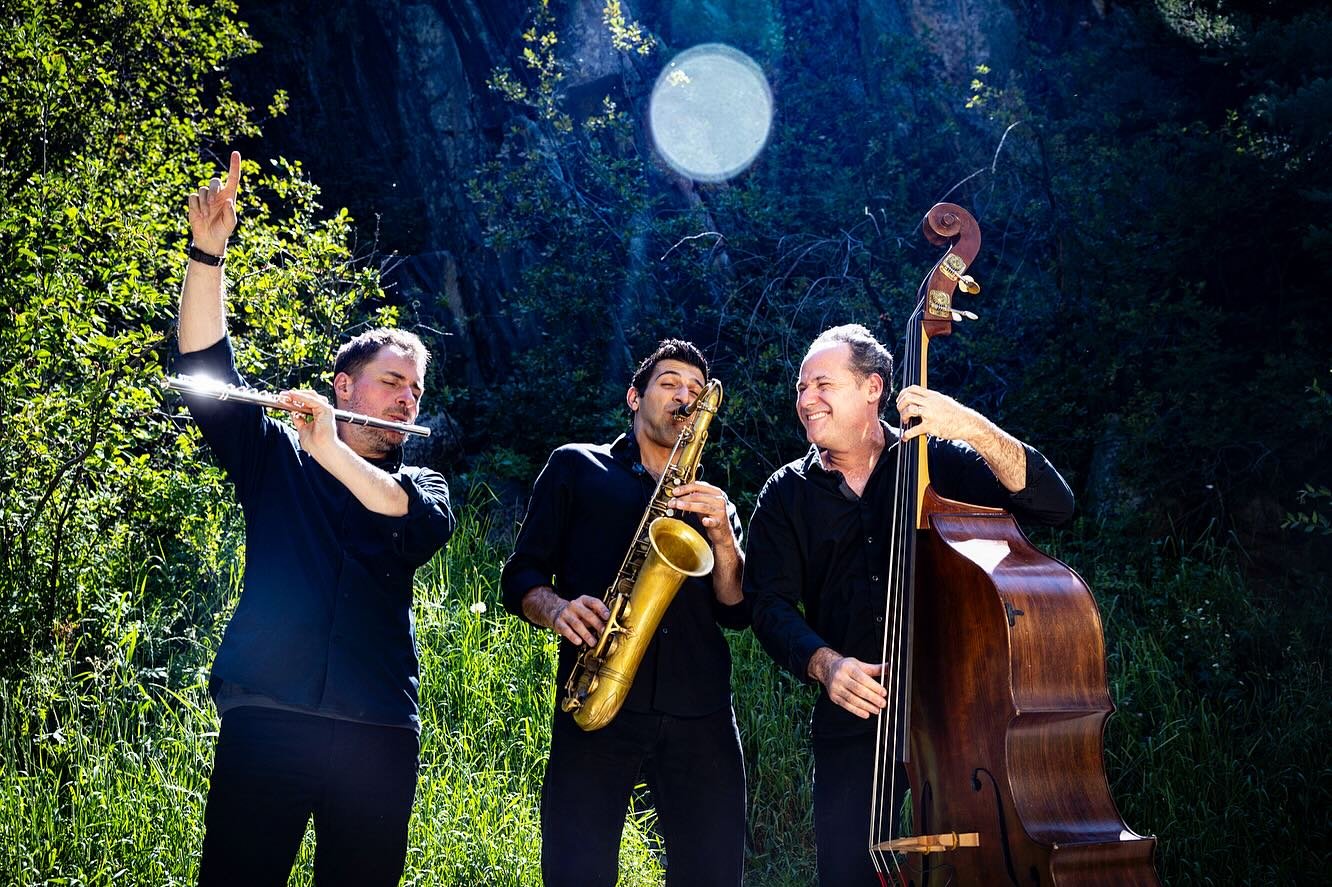
Special Event — PROJECT Trio
PROJECT Trio makes a triumphant return to WWCMF, and a maiden voyage into the acoustically magnificent barrel room at Echolands Winery.
Boasting a new look since their last visit to Walla Walla, we welcome saxophonist Daniel Berkey to the group. The barrel room will be rocking with a staggering array of hard-to-categorize music from many genres from hip-hop to jazz to classical, always with style and panache.
Actually, it’s easy to categorize their music: it all falls under the category of Awesome.
Artists: PROJECT Trio: Daniel Berkey, saxophone; Greg Patillo, flute; Peter Seymour, double bass

Festival Series 3: Barber, Ligeti, Schoenberg & Strauss
Samuel Barber (1910-1981)
Summer Music, Op. 31 (1956)
for woodwind quintet
György Ligeti (1923-2006)
Six Bagatelles (1953)
for woodwind quintet
I. Allegro con spirito
II. Rubato. Lamentoso
III. Allegro grazioso
IV. Presto ruvido
V. Adagio. Mesto (Béla Bartók in memoriam)
VI. Molto vivace. Capriccioso
Richard Strauss (1864-1949), arr. Franz Hasenöhrl (1885-1970)
Till Eulenspiegel— einmal anders! (Grotesque musicale), Op. 28/(1954)
Till Eulenspiegel— another way! (Musical Grotesque), Op. 28/(1954)
for violin, clarinet, horn, bassoon and double bass
Intermission
Arnold Schoenberg (1874-1951)
Verklärte Nacht (Transfigured Night), Op. 4
for string sextet
Artists: Timothy Christie, viola; Tracy Doyle, flute; Mara Gearman, viola; Cara Kizer, horn; Paul Rafanelli, bassoon; David Requiro, cello; Svend Rønning, violin; Maria Sampen, violin; Kevin Schempf, clarinet; Joshua Skinner, double bass; Meta Weiss, cello; Dan Williams, oboe

Tasting Music 3: Verklärte Nacht
A man and a woman walk side by side in a cold, moonlit forest. There are no clouds to obscure the light above. After a time, the woman speaks, telling her companion that she is pregnant, and not by him.
Is this a trailer for the latest gripping, prestige TV drama on your favorite streaming service? No. It is the subject of Arnold Schoenberg’s chamber tone poem Verklärte Nacht. This sonic journey ravishes, transforming player and listener alike, even as the characters walking through the cold forest are transformed. In Verklärte Nacht, we encounter the apex of post-Romantic expression, fittingly penned at the dawn of a new century.
(Note to self… develop TV show based on Dehmel/Schoenberg’s Transfigured Night.)
Arnold Schoenberg (1874-1951)
Verklärte Nacht (Transfigured Night), Op. 4 (1899)
For string sextet
Artists: Timothy Christie, viola; Mara Gearman, viola; David Requiro, cello; Svend Rønning, violin; Maria Sampen, violin; Meta Weiss, cello

Portrait of an Artist 3: Svend Rønning, violin
Violinist Svend Rønning has been a musical force (for good!) in the PNW for many, many years. In addition to his position as Artistic Director of the Second City Chamber Series in Tacoma, WA, Svend is also the concertmaster of Symphony Tacoma and is Professor of Violin at Pacific Lutheran University.
Tonight he makes his long overdue WWCMF debut in a program of contrasts highlighting an unexpected connection between that most musical of cities, Vienna, Austria and the city of tinsel, Hollywood, California.
All selections will be announced from the stage.
Artists: Ronaldo Rolim, piano; Svend Rønning, violin
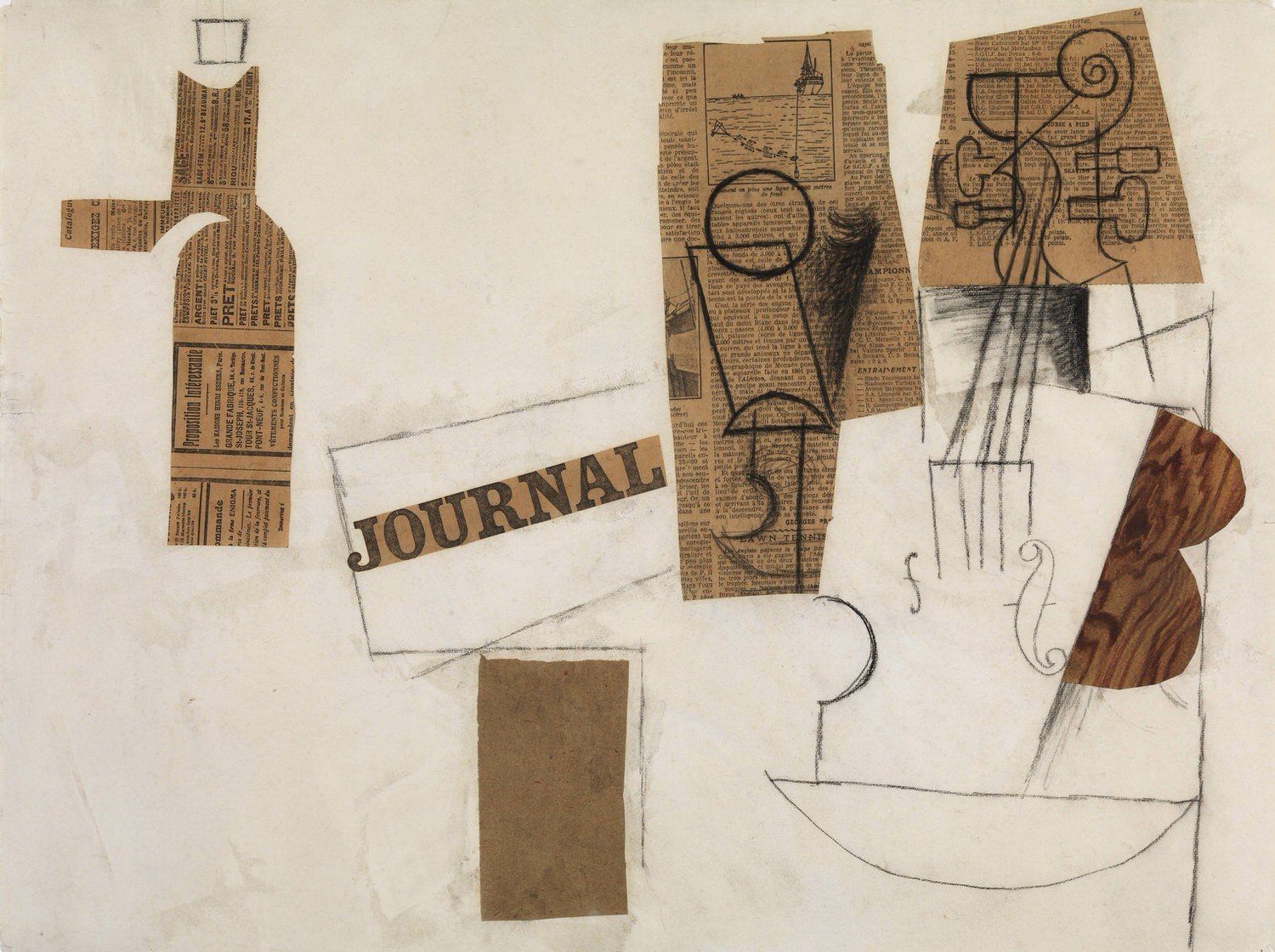
Special Event — Collage
An All-Star Cast of WWCMF musicians return to the idyllic setting of Abeja Winery for our annual Collage performances. The performance unfolds in two Acts set astride our beloved Sunset Intermission. The grounds of Abeja open at 5:30 PM. Come early, enjoy the scenery and have dinner before enjoying the performance.
Collage is a style of performing where the end of one piece dovetails with the beginning of the next to create a continuous flow of musical experiences. The musicians are in front of you, beside you, behind you, above you and even… among you. The experience is so immersive, you’ll think you’re dreaming.
Note: There is no late seating for either Act 1 or Act 2. Once the doors close, there is no entry.
Artists: Timothy Christie, viola; Mara Gearman, viola; Norbert Lewandowski, cello; Paul Rafanelli, bassoon; David Requiro, cello; Ronaldo Rolim, piano; Svend Rønning, violin; Maria Sampen, violin; Kevin Schempf, clarinet; Joshua Skinner, double bass; Meta Weiss, cello; Dan Williams, oboe; Xiaohui Yang, piano

Special Event — Collage
An All-Star Cast of WWCMF musicians return to the idyllic setting of Abeja Winery for our annual Collage performances. The performance unfolds in two Acts set astride our beloved Sunset Intermission. The grounds of Abeja open at 5:30 PM. Come early, enjoy the scenery and have dinner before enjoying the performance.
Collage is a style of performing where the end of one piece dovetails with the beginning of the next to create a continuous flow of musical experiences. The musicians are in front of you, beside you, behind you, above you and even… among you. The experience is so immersive, you’ll think you’re dreaming.
Note: There is no late seating for either Act 1 or Act 2. Once the doors close, there is no entry.
Artists: Timothy Christie, viola; Mara Gearman, viola; Norbert Lewandowski, cello; Paul Rafanelli, bassoon; David Requiro, cello; Ronaldo Rolim, piano; Svend Rønning, violin; Maria Sampen, violin; Kevin Schempf, clarinet; Joshua Skinner, double bass; Meta Weiss, cello; Dan Williams, oboe; Xiaohui Yang, piano

Special Event — The Luthier’s Art
A violin sold at auction recently for $11.25M. It wasn’t even a record price. That distinction belongs to a violin sold back in 2011 for $15.9M. Those are some impressive numbers. But I am more impressed by the fact that the violins in question were made in 1714 and 1721 respectively. They were made more than 300 years ago and they work as well today as they did back then— some say better! Those two fiddles, and about 950 like them, were made by the same guy. You know his name: Antonio Stradivari.
What is it about these little machines that makes them so resilient? Very few pieces of equipment that worked 300 years ago still work today, and though Strads can take up a lot of oxygen courtesy of dizzying auction prices, there are actually quite a number of Old Italians (as they are called) still in use today. In fact, you’ve already heard a couple on the Festival this season, and dozens of them over the years!
To unpack all the fuss and guide us in a deep dive into all things fiddle, we welcome violin-maker Jackson Maberry. No stranger to Walla Walla or WWCMF audiences, Jackson graduated from Whitman College and supported himself, at least seasonally, working for WWCMF along the way. He went from Whitman to Cambridge University and from Cambridge to Indiana University Jacobs School of Music where he completed the prestigious String Instrument Technology program. He hung out his shingle as a violin maker in 2021. Tonight, we’ll hear performances of music for strings, violin in particular, while also exploring the technology behind the music. What makes these things tick? And how do you make one? Jackson has the answers.
Artists: Timothy Christie, viola; Norbert Lewandowski, cello; Jackson Maberry, violin-maker; Maria Sampen, violin

Festival Series 2: Fairy Tales
Robert Schumann (1810-1856)
Märchenbilder (Fairy Tale Pictures), Op. 113 (1851)
for viola and piano
I. Nicht schnell
II. Lebhaft
III. Rasch
IV. Langsam, mit melancholischem Ausdruck
Maurice Ravel (1875-1937)
Ma Mère L’Oye (Mother Goose), M. 60 (1910)
for piano 4-hands
I. Pavane de la Belle au bois dormant. Lent
II. Petit Poucet. Très modéré
III. Laideronnette, Impératrice des pagodes. Mouvement de marche
IV. Les entretiens de la Belle et de la Bête. Mouvement de valse modéré
V. Le jardin féerique. Lent et grave
Intermission
Wolfgang Amadeus Mozart (1756-1791)
Piano Quartet in G minor, K. 478 (1785)
I. Allegro
II. Andante
III. Rondo
Artists: Timothy Christie, viola; Norbert Lewandowski, cello; Ronaldo Rolim, piano; Maria Sampen, violin; Xiaohui Yang, piano
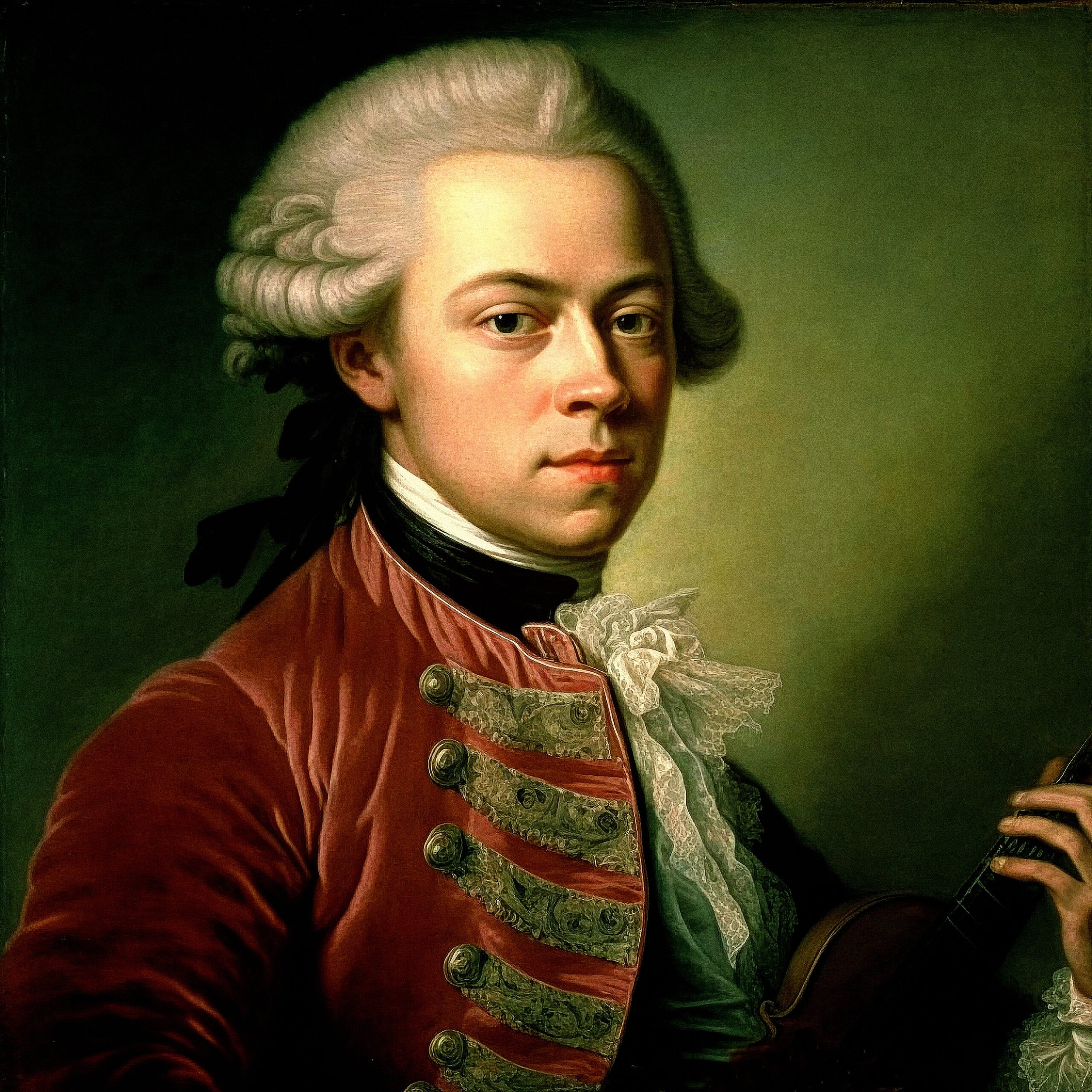
Tasting Music 2: Mozart Piano Quartet in G minor, K. 478
Survey the entire catalog of Mozart’s music (side note: that ‘K’ you always see after the title of a piece by Mozart refers to the catalog) and you will find very few pieces designated in a minor key. Therefore, the music by Mozart framed in a minor key takes on special meaning by dint of its relative scarcity. And when it comes to minor keys, G minor makes a strong case for Mozart’s favorite. Think of the stormy beginning of his Symphony No. 25, which opens the film Amadeus. The first few measures of his Symphony No. 40 have disrupted concerts innumerable as a cellphone ringtone. And in his chamber output, the late String Quintet in G minor spins to epic proportions.
Here, Mozart begins with a forceful rhythmic unison one would be forgiven for attributing to Beethoven. Perhaps young Beethoven was listening. Yet, as forceful as the opening motif is, you know Mozart liked a good party. And the clouds rarely hang about Mozart very long. We’ll chase them away together at Pepper Bridge Winery.
Wolfgang Amadeus Mozart (1756-1791)
Piano Quartet in G minor, K. 478 (1785)
I. Allegro
II. Andante
III. Rondo
Artists: Timothy Christie, viola; Norbert Lewandowski, cello; Ronaldo Rolim, piano; Maria Sampen, violin

Portrait of an Artist 2: Xiaohui Yang, piano
WWCMF audiences have thrilled to high-flying performances of pianist Xiaohui Yang these past few seasons. In fact, in her debut season of 2022, she earned a coveted WWCMF MVP award for outstanding artistry, fortitude and positive attitude amid circumstances that would have wilted a lesser musician. I think she was in something like 10 consecutive hours of rehearsal on her first day, capped by a Portrait performance with cellist Meta Weiss. Her only break that day was when we brought her a sandwich from Graze (solid sandwich!), which she ate sitting at her piano bench between pieces.
In addition to her WWCMF MVP award, Xiaohui won the 2017 Naumburg International Piano Competition, and has been featured in performances throughout four continents, including in venues such as Carnegie Hall, Ozawa Hall, New Jersey Performing Arts Center, Tel Aviv Museum of Art and the Seoul Arts Center. And she has of course performed in the middle production room of Pepper Bridge Winery, site of that marathon first day a few years ago, and site of tonight’s performance.
All selections will be announced from the stage.
Artist: Xiaohui Yang, piano

Festival Series 1: Pops & Shost!
Chamber Music Pops!
Featuring music by Borodin, naturally, but also gorgeous selections from pop, yacht, jazz and the baroque. Curated by Timothy, Philip, Stephen, Norbert and Josh.
All selections will be announced from the stage.
Intermission
Dmitri Shostakovich (1906-1975)
Piano Quintet in G minor, Op. 57
I. Prelude: Lento
II. Fugue: Adagio
III. Scherzo: Allegretto
IV. Intermezzo: Lento
V. Finale: Allegretto
Artists: Timothy Christie, viola; Conor Hanick, piano; Norbert Lewandowski, cello; Stephen Miahky, violin; Jennifer Northam, vocals; Philip Payton, violin; Joshua Skinner, double bass

Tasting Music 1: Shostakovich Piano Quintet
Dmitri Shostakovich composed and performed music under an oppressive Soviet regime that demanded its artists toe the official party line under any and all circumstances. Artists who were perceived to stray from the party line tended to disappear. And it is well documented— including on Festivals such as this one— that the music of Shostakovich is invariably tied to the idea of dissent. He needled, parodied, advocated, wept and fake-laughed, all under the guise of doing his Soviet best. The Piano Quintet in G minor is no exception… except in the way that it is an exception. For this piece, Shostakovich won the inaugural Stalin Prize, First-Class, and was awarded 100,000 rubles cash money. Rubles-Schmoobles you say? In 1941, 100,000 RUB equaled 20,000 USD. $20,000 in 1941 equals about $427,557 today.
It goes without saying that you will want to join us at Foundry Vineyards to see and hear what all the fuss is about! And a ticket is just $25. That’s 2,100 RUB if you’re curious. And we do not accept them.
Dmitri Shostakovich (1906-1975)
Piano Quintet in G minor, Op. 57
I. Prelude: Lento
II. Fugue: Adagio
III. Scherzo: Allegretto
IV. Intermezzo: Lento
V. Finale: Allegretto
Artists: Timothy Christie, viola; Conor Hanick, piano; Norbert Lewandowski, cello; Stephen Miahky, violin; Philip Payton, violin
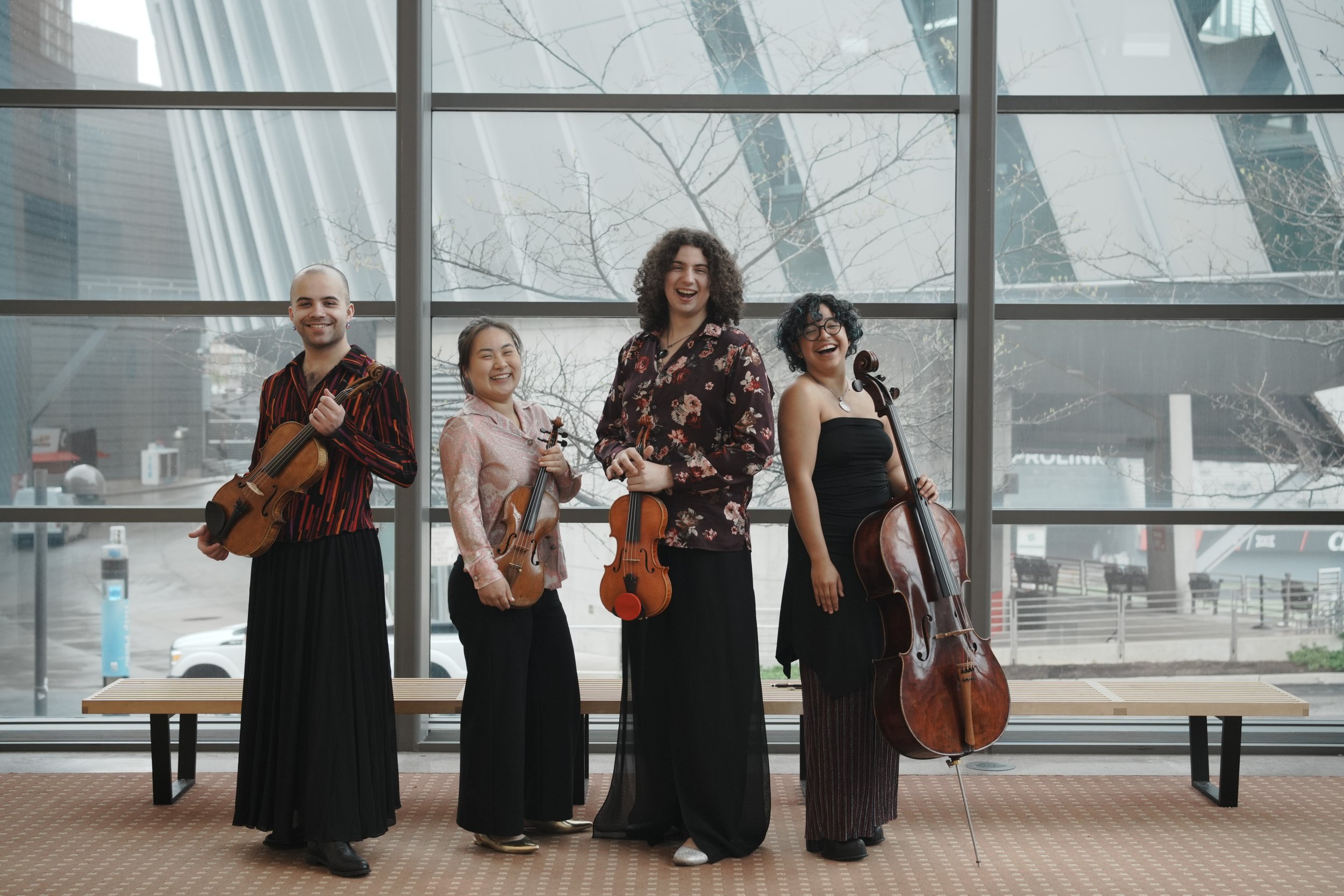
Portrait of an Artist 1: Poiesis Quartet
The Poiesis Quartet won the Grand Prize at the 2023 Fischoff National Chamber Music Competition and, in 2024, joined the North American roster of the Concert Artist Guild by winning the Louis & Susan Meisel Competition. Recent graduates of the Oberlin Conservatory, Poiesis are now the Graduate String Quartet in Residence at the Cincinnati College-Conservatory of Music, studying under the Ariel Quartet.
More important to you, dear audience, is that Poiesis is the 2025 WWCMF Emerging Artist Quartet, following in the footsteps of Ivalas Quartet, masso and Cerus Quartet as the fourth group to undertake this position. During their Walla Walla residency, they will play for nearly 2,000 youngsters in the Walla Walla Public Schools, presenting in both English and Spanish.
The word Poiesis comes from the Ancient Greek verb, “to make” or “create,” which in turn shares a root with the modern English word, “poetry.” As a string quartet made up of inter- and multi-disciplinary young artists, the Poiesis Quartet seeks to program music of all styles and genres and expand the traditional quartet setting with an emphasis on platforming works by emerging and underrepresented composers. Poiesis strives to create unique moments of synchronicity, sensitivity, and verve in each performance.
And according to the Oxford English Dictionary, the word “Poiesis” occurs about 0.08 times per million words in modern written English. So, one in a million doesn’t begin to describe tonight’s performance!
All selections will be announced from the stage.
Artists: Poiesis Quartet: Max Ball, violin; Jasper de Boor, viola; Adalus Low-Manzini, cello; Sarah Ying Ma, violin
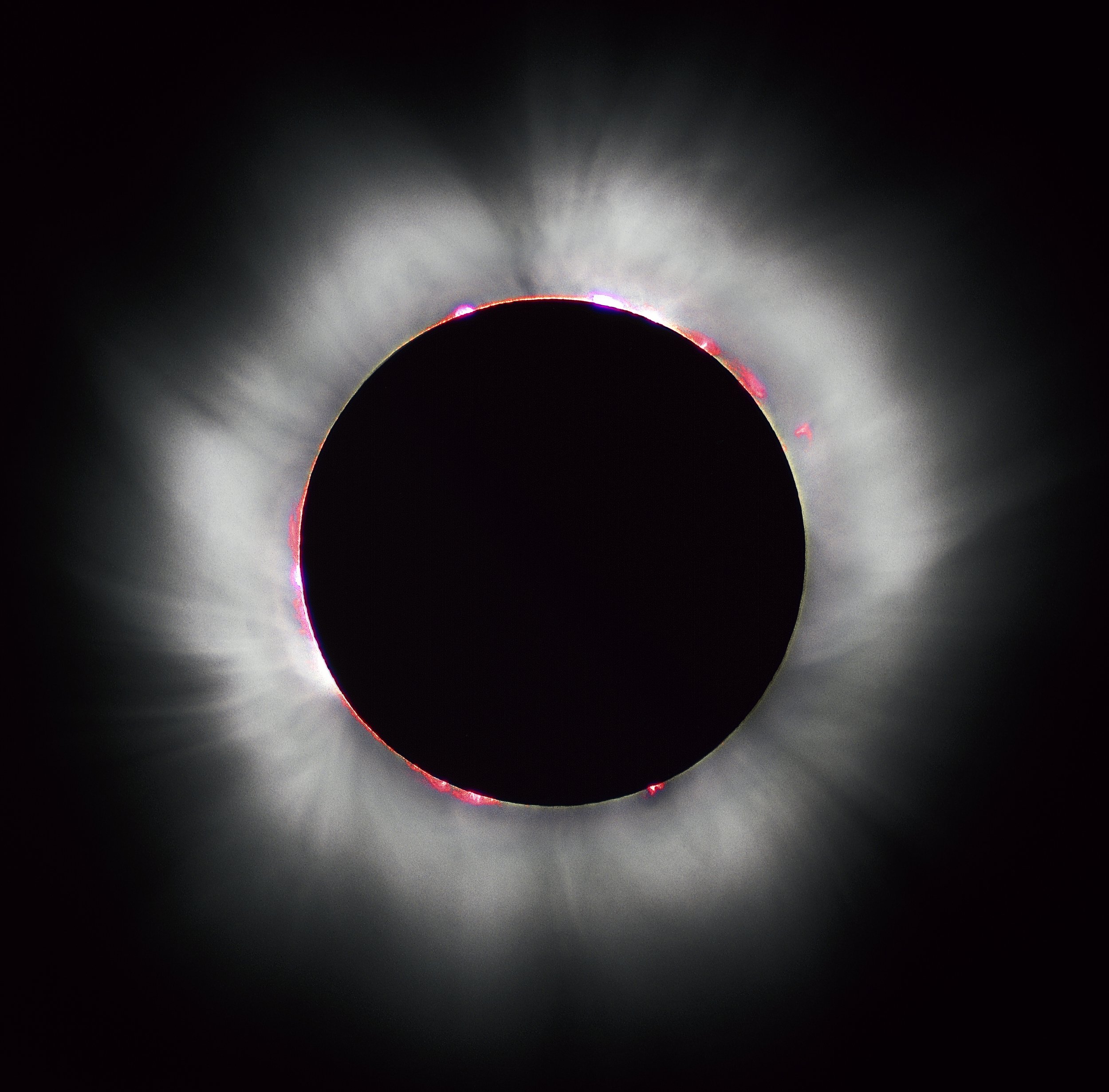
Festival Series — Stellar Atmospheres
Antonio Vivaldi (1678-1741)
From 12 Trio Sonatas, Op. 1
Sonata No. 12 in D minor, RV 63, La Follia
André Caplet (1878-1925)
Conte Fantastique d’après La Masque de la Mort Rouge (1924)
For harp and string quartet
Intermission
Molly Herron (b. 1982)
Stellar Atmospheres (2015/2024)
For treble vocal quartet and string quartet
Co-commissioned by Quince Vocal Ensemble and WWCMF
With additional support from Bud & Phyllis Wulliman
Michael Miller
“Going down that road” from Guthrie Songs (2018)
Carrie Henneman Shaw
The Smallest Gap (2019)
Laura Steenberge
The Four Winds (2015)
V. Red Giant, White Dwarf
Artists: Stephanie Aston, voice; Timothy Christie, viola; Amanda DeBoer Bartlett, voice; Elizabeth Landis, harp; Vanessa Moss, violin; Liz Pearse, voice; Maria Sampen, violin; Carrie Henneman Shaw, voice; Sally Singer Tuttle, cello
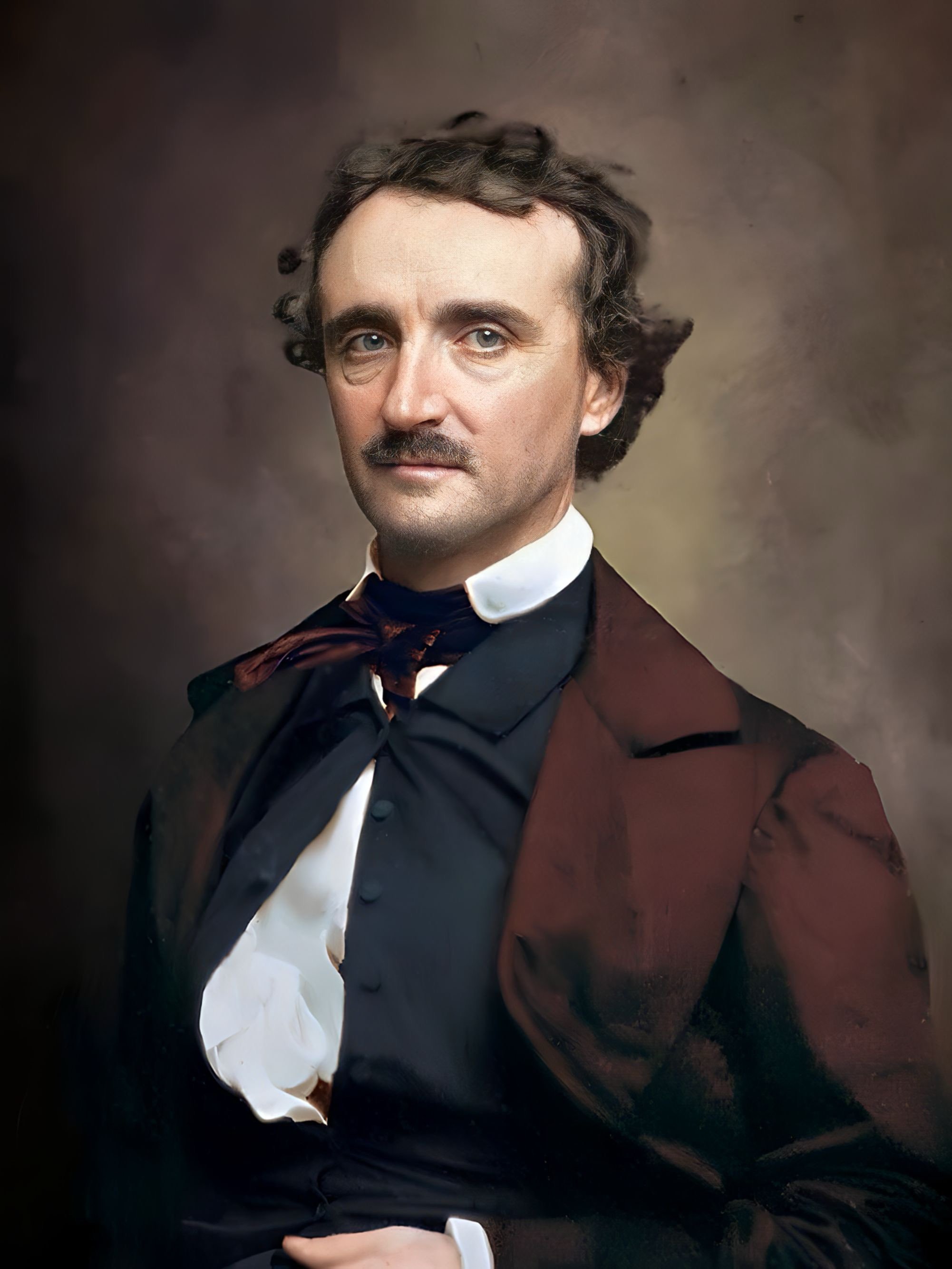
Tasting Music — Edgar Allen Whoa!
André Caplet (1878-1925)
Conte Fantastique d’après La Masque de la Mort Rouge
For harp and string quartet
“There were much glare and glitter and piquancy and phantasm…”
“Merci, Edgar!” said French composer, André Caplet, upon reading the words above from Poe’s Masque of the Red Death. Maybe he said that, maybe he didn’t. Doesn’t matter! These are the qualities Caplet brings to life in his work for harp and string quartet, Conte Fantastique d’après La Masque de la Mort Rouge (1924). Glare. Glitter. Piquancy. Phantasm.
A pandemic rages. An eccentric aristocrat invites hundreds of nobles to ride out the storm in his castle, enjoying opulent parties and masked balls. There are seven chambers, each decorated to the point of embodiment of a different color: Blue, Purple, Green, Orange, White, Violet and Black. In the outer rooms, the vibe is light and merry. As the action progresses deeper into the castle, things take a decidedly morbid turn. Vincent Price makes a cameo (I think).
Are you intrigued? We visit Echolands Winery for this performance sure to echo in the annals of WWCMF lore for years to come.
Artists: Timothy Christie, viola; Elizabeth Landis, harp; Vanessa Moss, violin; Maria Sampen, violin; Sally Singer Tuttle, cello
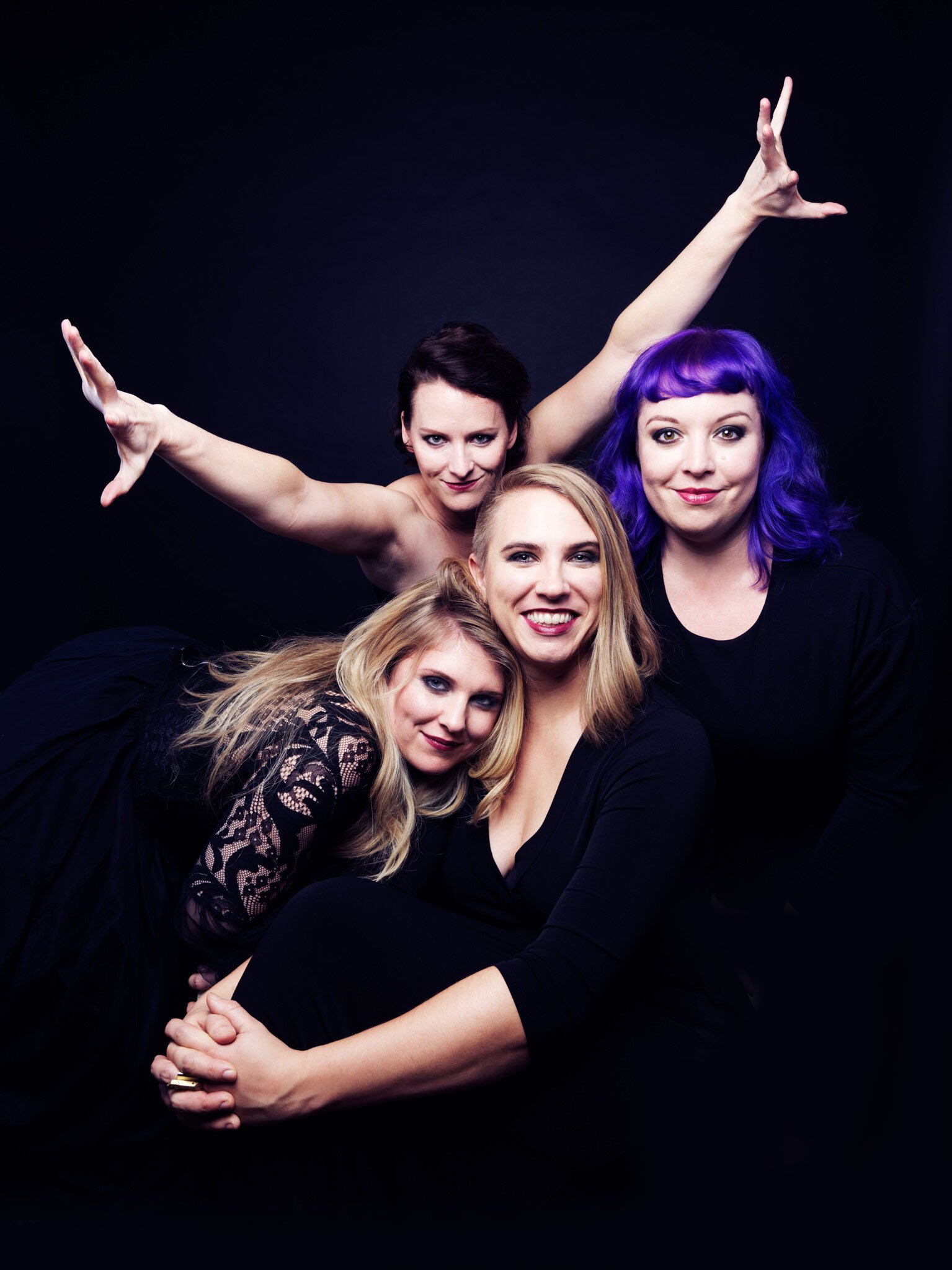
Special Event — Quince Ensemble
Forbidden love. That’s the quickest synopsis of the Arthurian-era legend of Tristan and Isolde. Fleshing it out a bit, Tristan is charged with escorting Isolde, an Irish princess, from Ireland to Cornwall by boat so that she can marry King Mark of Cornwall. On the way the two somehow accidentally drink a love potion. It works. Tristan is doomed to suffer death at the hands of King Mark’s henchmen. Isolde follows suit, owing to the potency of her love for Tristan and her heartbreak upon his death.
The most famous retelling of the story is Richard Wagner’s 1865 opera, Tristan und Isolde. “Mild und leise…” For Wagner fans, these words are like a clubhouse secret password. Loosely translated, they mean “softly and gently.” But,what could that possibly mean? In the context of Wagner’s opera (music drama), they represent the commingling of love and death. It’s Act III. Isolde looks upon the dead body of her (illicit/accidental) true love, Tristan. She contemplates the tranquility of his state, savoring a new beauty even as she savors the pain of his loss. She proceeds to sing herself to an ecstatic death, overcome by his strange perfection — a Liebestod or ‘Love Death.’
Which brings us to tonight’s work, love fail, by David Lang. This masterpiece is a reexamining of the medieval romance of Tristan and Isolde from different sources. “Mild und Leise” becomes “mild, light” in movement 12 of Lang’s retelling. Scored for four treble voices and percussion, Quince Ensemble brings the work to life like no other group on the world stage today. And we have them all to ourselves. This is a special night in the now 18-year arc of WWCMF. We return to Foundry Vineyards, site of so many wonderful performances over the years.
All selections will be announced from the stage.
Artists: Stephanie Aston, voice; Amanda DeBoer Bartlett, voice; Liz Pearse, voice; Carrie Henneman Shaw, voice
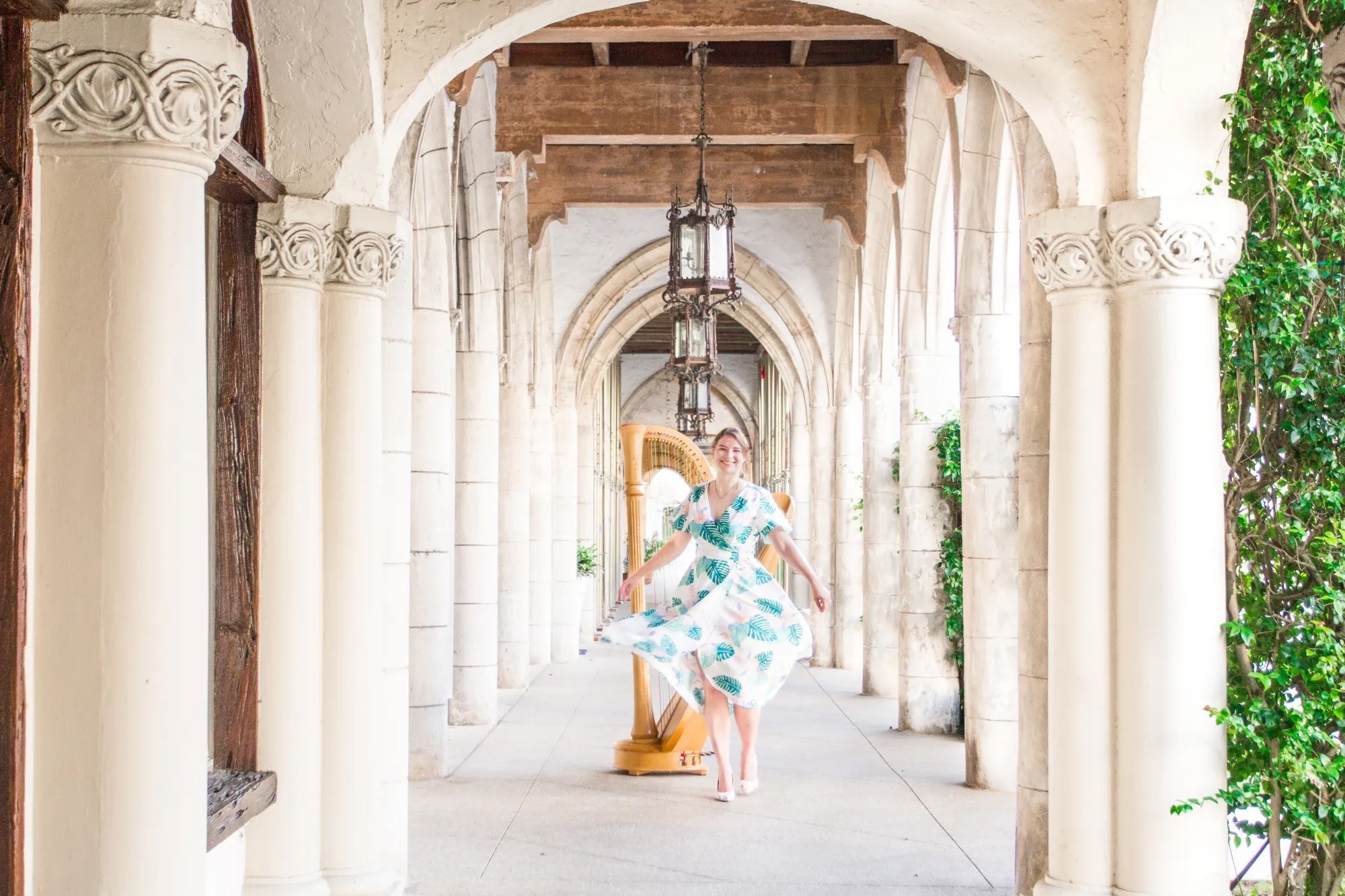
Portrait of an Artist, Elizabeth Landis, Harp
The harp is associated with many things, all of them good: heaven, cupid, Ireland and in particular, Irish beer. And the harp is one of the most ancient instruments with many appearances in classical Greek history and mythology. But in modern Western culture, perhaps the readiest association with the harp is the wedding ceremony. Our featured Artist, Elizabeth Landis, played her first wedding at the age of twelve. I wonder if the happy couple is still together. I bet they are! Because Liz is an artist of the highest pedigree.
From early studies at the Interlochen Arts Academy to the University of Toronto, Temple University, Cincinnati College Conservatory of Music and the Aspen Music Festival, Liz has traveled extensively in the music world. But she also brings a love of traveling in the wider world, and is a respected travel and food blogger. Epicure, traveler and purveyor of 47 strings and seven pedals, Liz approaches music in much the same way as she looks at the world — her oyster!
All selections will be announced from the stage.
Artists: Elizabeth Landis, harp
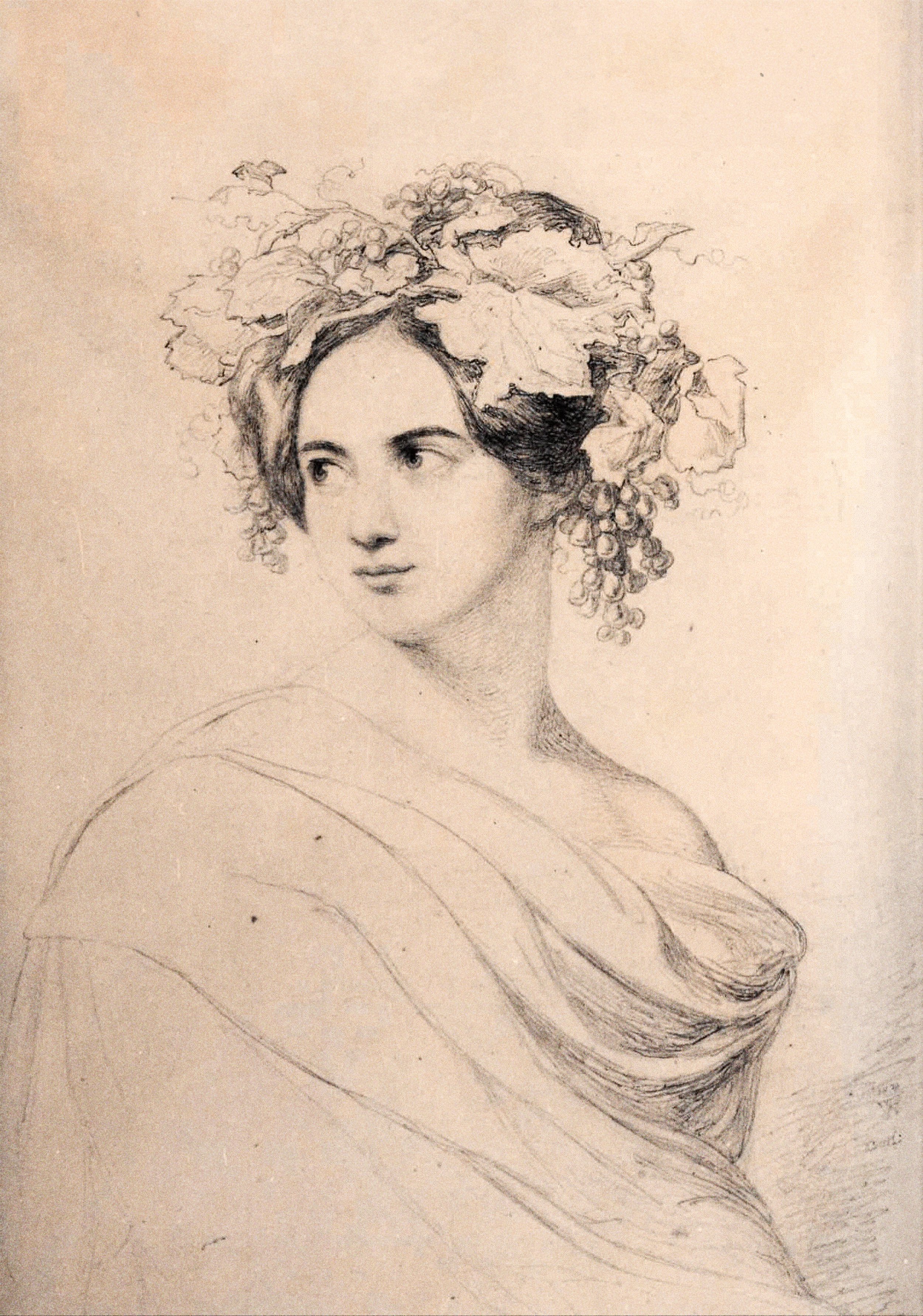
Festival Series 4
Tonight’s performance has been made possible by the generosity of Susan Monahan and Mark Brucks.
David Glenn (b. 1951)
Sculpture Garden (2009) For piano quintet
I. Styx
II. Three Stories
III. Carnival
IV. Pirouette
V. Soaring Stones
Fanny Mendelssohn (1805-1847)
String Quartet in E flat (1834)
I. Adagio ma non troppo
II. Allegreto
III. Romanze
IV. Allegro molto vivace
Intermission
Amy Beach (1867-1944)
Piano Quintet in F# minor, Op. 67 (1907)
I. Adagio - Allegro moderato
II. Adagio espressivo
III. Allegro agitato - Adagio come prima - Presto
Artists: Winston Choi, piano; Timothy Christie, viola, Norbert Lewandowski, cello; Maria Sampen, violin; MingHuan Xu, violin
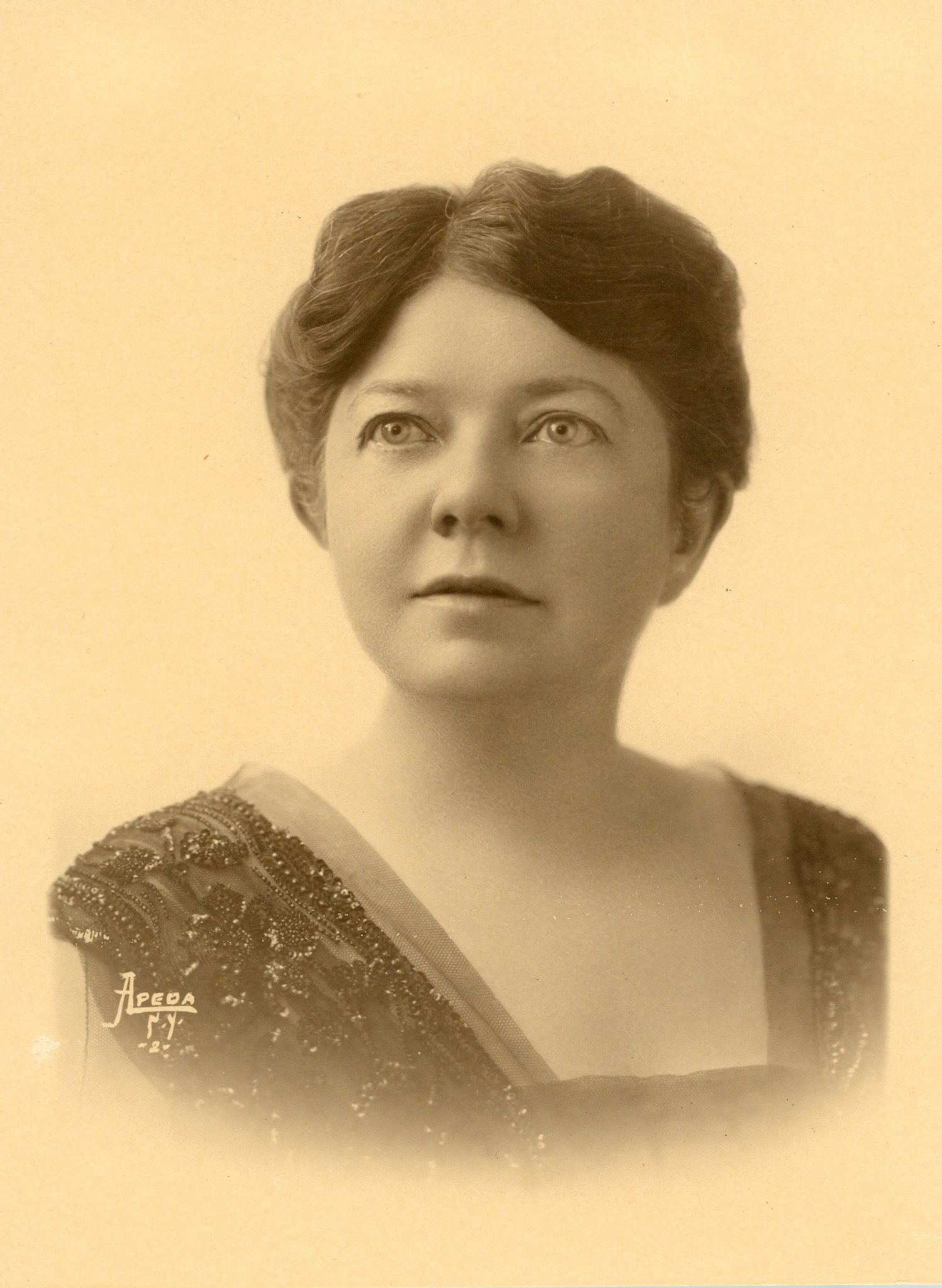
Tasting Music 4 — Amy Beach
Tonight’s performance has been made possible by the generosity of Michael Haight and Cathy Lee-Haight.
Born in New Hampshire in 1867, Amy Marcy Cheney, displayed musical gifts almost from the start. She first studied piano with her mother, then with two prominent German expats in Boston, eventually adding courses in counterpoint with a German-trained Bostonian. She established herself as a concert soloist, performing with the most esteemed arts organizations in the US, notably the Boston Symphony.
At the age of 18, Amy married Dr. Henry Harris Aubrey Beach, a 42-year old surgeon. Much about this union seems strange to our modern sensibilities, perhaps nowhere more so than in the prenuptial agreement curtailing Amy’s musical activities, limiting her public piano performances to two per year, and then only for charity. But composition was deemed a suitable pursuit for a married woman, and Mrs. Henry Harris Aubrey Beach would compose and publish musical works throughout her self-reported happy marriage, and continue to do so under the same name long after Henry’s passing in 1910.
And yet, and I say this objectively, Amy was a far superior musician than Henry was a surgeon! While he poked about with blunt instruments of the Civil War era, she performed Chopin, Liszt, Beethoven and Bach to international acclaim, and became the first American woman to compose and publish a symphony (E minor, The Gaelic, Op. 32), a work which received rave reviews in the US and Europe, a coup for any American composer, let alone a woman. Henry may still have been using leeches.
Tonight, we perform the lyrical masterpiece, the Piano Quintet in F# minor, Op. 67, by Amy Beach, as she is now known.
Amy Beach (1867-1944)
Piano Quintet in F# minor, Op. 67 (1907)
I. Adagio - Allegro moderato
II. Adagio espressivo
III. Allegro agitato - Adagio come prima - Presto
Artists: Winston Choi, piano; Timothy Christie, viola; Norbert Lewandowski, cello; Maria Sampen, violin; MingHuan Xu, violin

Portrait of an Artist 4 — MingHuan Xu, violin
Tonight’s performance is made possible by the generosity of Kris and Tim Barry.
At first, you think you’re in for a wonderful recital by an extremely talented violinist. (Don’t worry. You are!) Then the question is posed to said violinist, in this case MingHuan Xu, “Have you ever been part of a sting operation?” And things shift a bit. What lurks beneath MingHuan’s polished exterior? Pure intrigue. She’s tough on crime by night, a virtuoso violinist by day.
Sounds more like a movie than a Portrait recital, right? And that’s fitting. Joined by pianist Winston Choi, MingHuan has a program of music featured on the big screen by composers John Corigliano, Dmitri Shostakovich, Carlos Gardel and more.
All works will be announced from the stage.
Artists: MingHuan Xu, violin; Winston Choi, piano
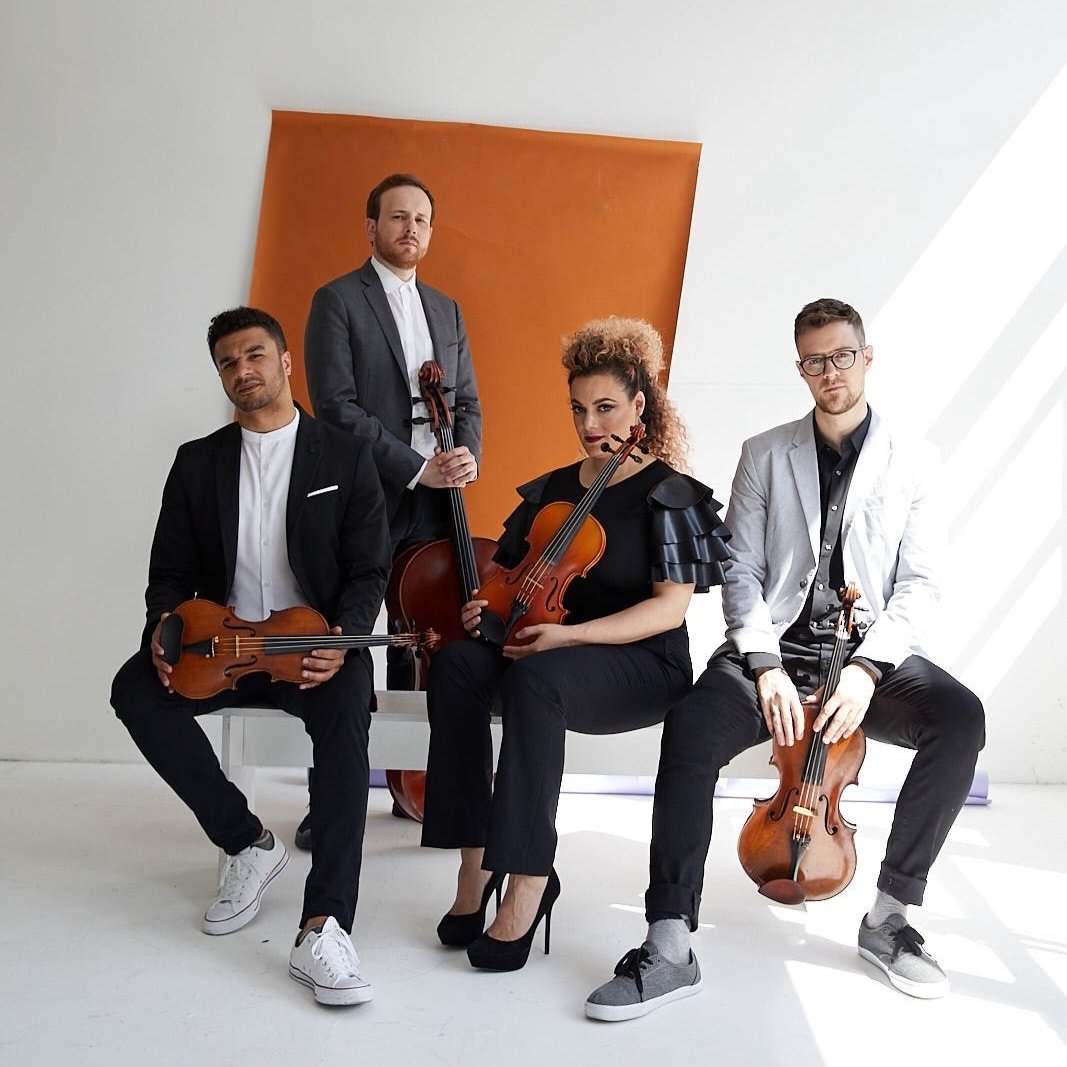
Special Event — PUBLIQuartet
Tonight’s performance has been made possible by the generosity of Cecile and Rick Ervin.
We are delighted to welcome PUBLIQuartet in their WWCMF debut. This program features selections from the quartet's ongoing What Is American project, which inspired a GRAMMY®-nominated album of the same name. This wide-ranging set of works will explore the resonances between contemporary, blues, jazz, free and rock-inflected music — all of which trace their roots back to the Black and Native American music that inspired Antonin Dvorak’s “American” String Quartet.
The program will include re-imaginations of music by Ornette Coleman, Ida Cox, Alice Coltrane, Betty Davis, Duke Ellington, Tina Turner, and Fats Waller alongside recent works by Vijay Iyer and Henry Threadgill; also on the program is a new work by Jeff Scott, commissioned with the support of a 2024 Chamber Music America Artistic Projects grant. Interrogating these traditions of our nation’s complex history, PQ attempts to connect the dots, illuminating the past, present, and future of American concert music.
All works will be announced from the stage.
Artists: PUBLIQuartet: Hamilton Berry, cello; Rubén Rengel, violin; Nick Revel, viola; Curtis Stewart, violin
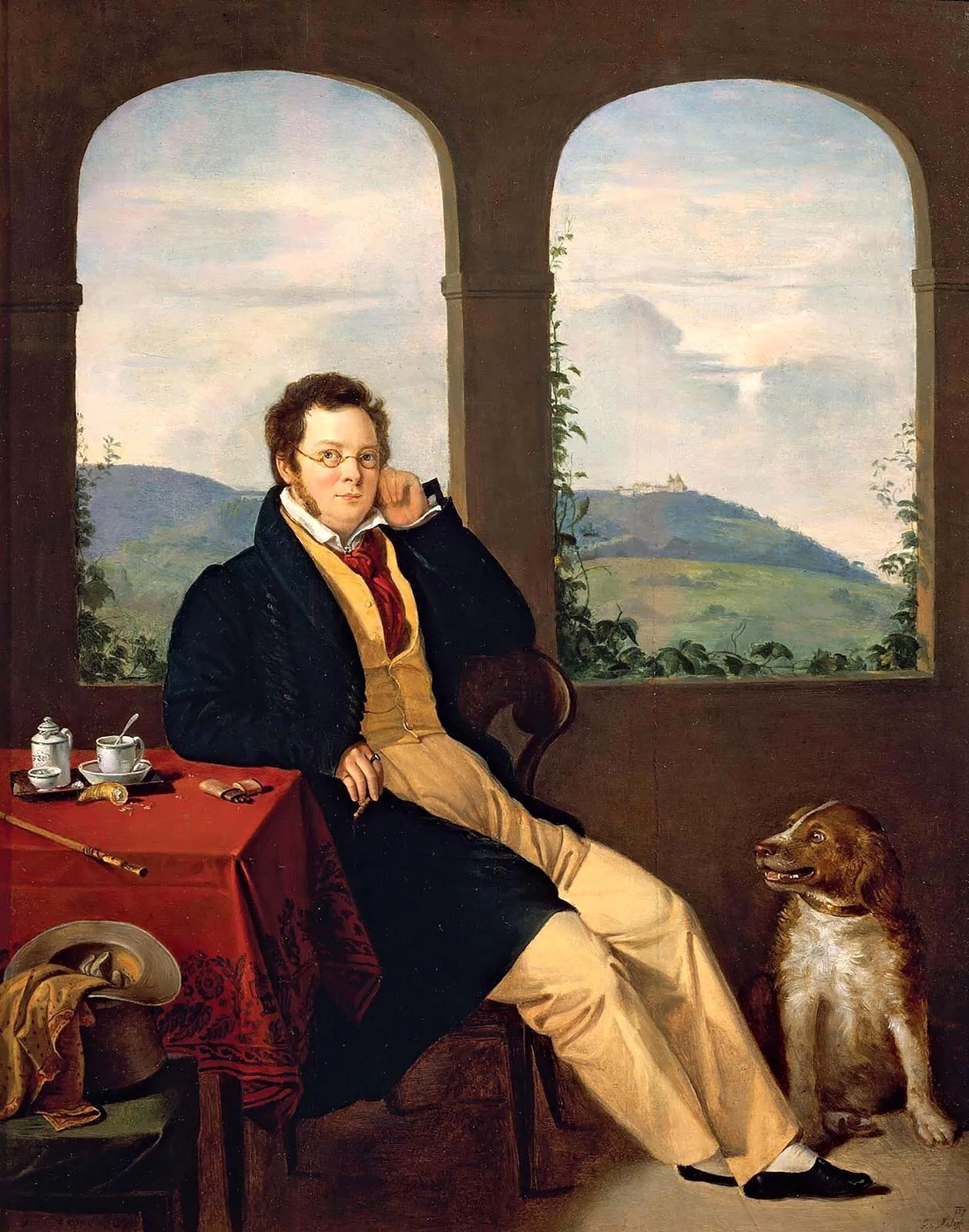
Festival Series 3
Tonight’s performance has been made possible by the generosity of Karl Eckhardt and Pamela Mittelstadt.
Schubert Fantasia in F minor, D. 940 (1828) For piano four hands
I. Allegro molto moderato
II. Largo
III. Scherzo. Allegro vivace
IV. Finale. Allegro molto moderato
John Mackey
Breakdown Tango (2000) For piano, clarinet, violin and cello
Intermission
Wolfgang Amadeus Mozart (1765-1791)
Quintet in A for Clarinet and Strings, K. 581
I. Allegro
II. Larghetto
III. Menuetto
IV. Allegretto con variazioni
Tonight’s performance is dedicated to Bryan Ford. We miss you, Bryan.
Artists: Timothy Christie, viola; Norbert Lewandowski, cello; Vanessa Moss, violin; Ronaldo Rolim, piano; Maria Sampen, violin; Kevin Schempf, clarinet; Xiaohui Yang, piano
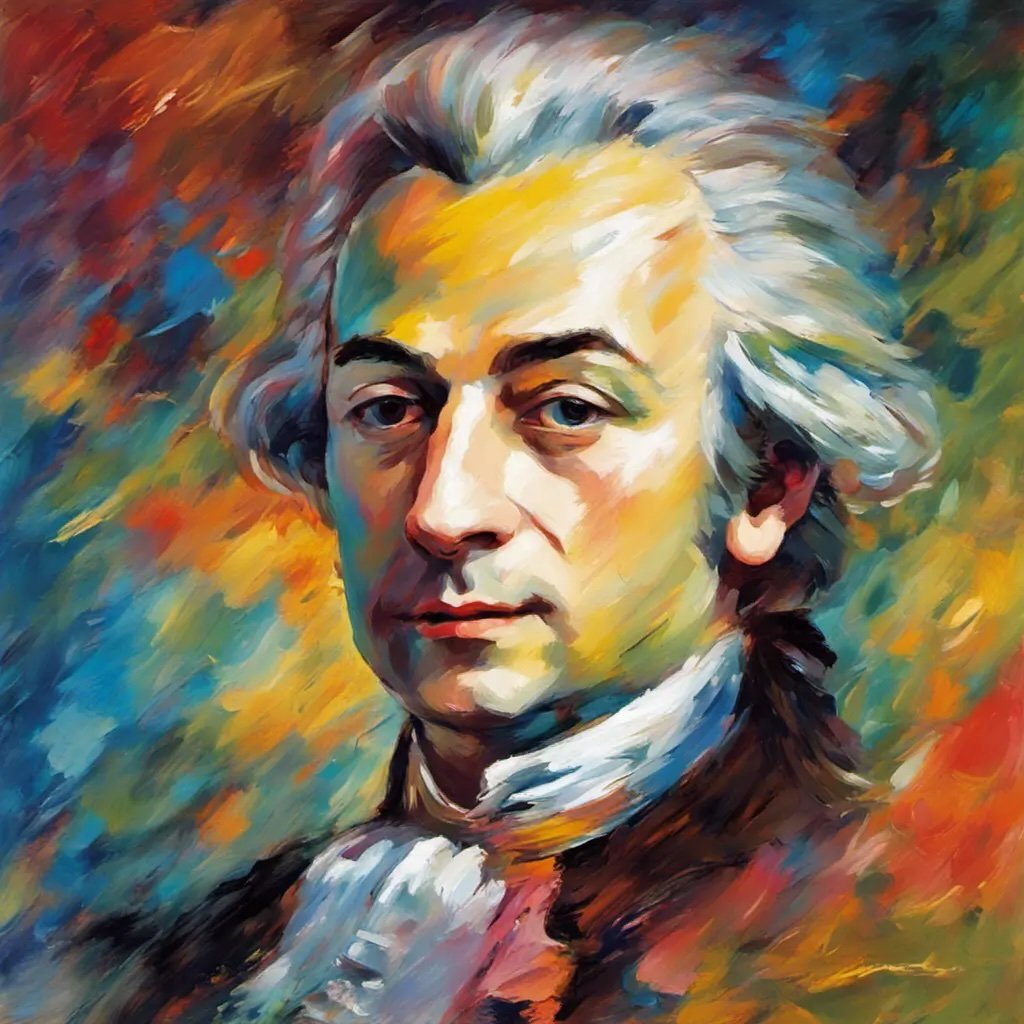
Tasting Music 3 — Mozart
Tonight’s performance has been made possible by the generosity of an anonymous donor in memory of Tim Brown — gentle soul, enquiring mind, devoted to chamber music.
Tonight’s Tasting Music performance features one of Mozart’s great chamber works. The legacy of this work is not just the invention of a musical form, the clarinet quintet, but perhaps the establishment of the clarinet itself as an indispensable part of the corps of classical instruments. The sonority of late Mozart leans into the clarinet, even displacing the more standard pair of oboes in the orchestra of the time. And behind this epiphany on Mozart’s part was one man, Anton Stadler. Stadler was a virtuoso of the instrument whose playing inspired Mozart to compose both this quintet and ultimately his final completed work, the Clarinet Concerto, K. 622. Oh, and that famous incomplete final piece? The Requiem is scored for two clarinets and no oboes. OK, ok… you know your history. Technically, the clarinets of the Concerto and the Requiem are basset horns, a variant of the clarinet with access to additional low notes. But it was Stadler who figured prominently in the invention and perfection of the basset horn, too. Tonight, our Stadler is named Schempf.
Wolfgang Amadeus Mozart (1765-1791)
Quintet in A for Clarinet and Strings, K. 581
I. Allegro
II. Larghetto
III. Menuetto
IV. Allegretto con variazioni
Artists: Timothy Christie, viola; Norbert Lewandowski, cello; Vanessa Moss, violin; Maria Sampen, violin; Kevin Schempf, clarinet
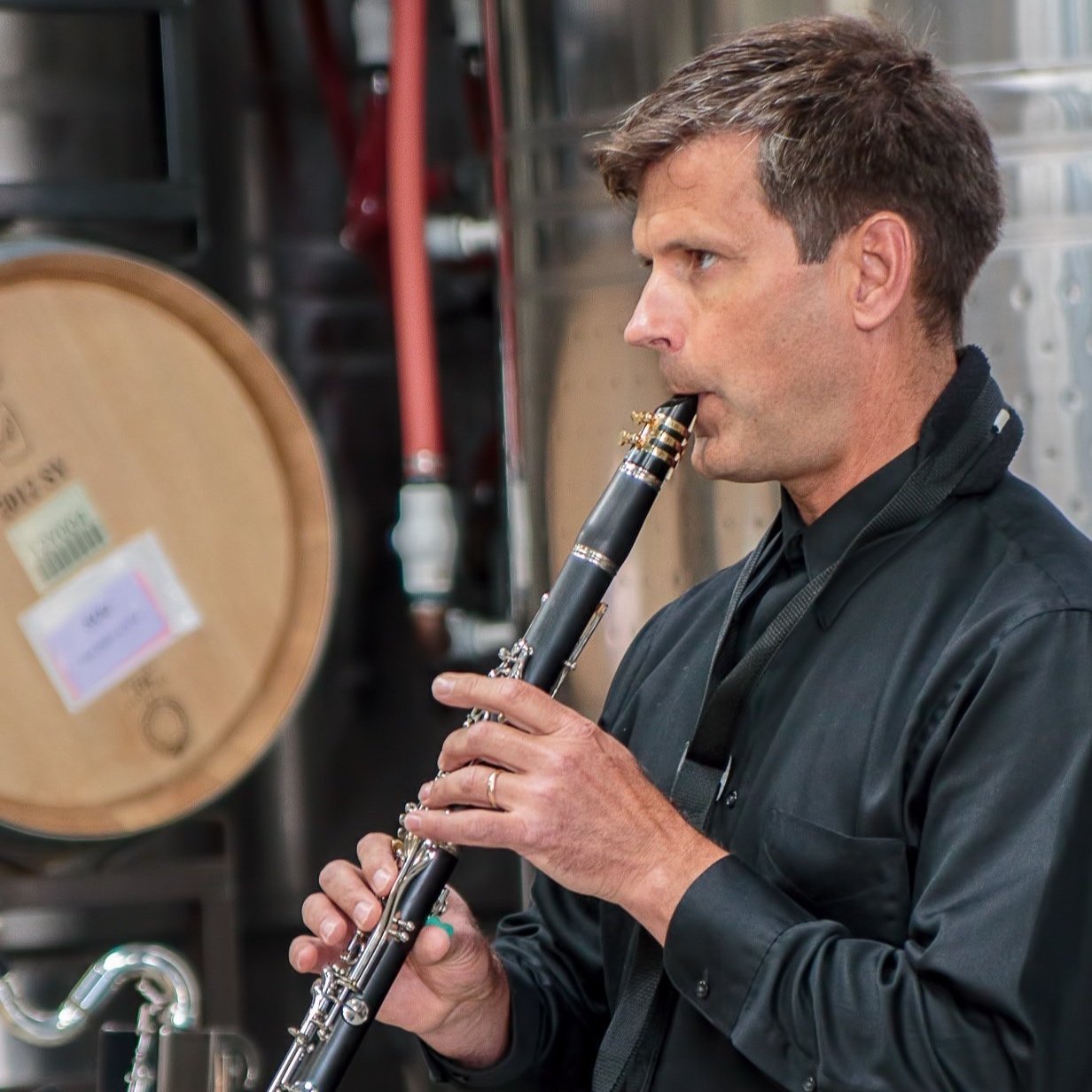
Portrait of an Artist 3 — Kevin Schempf, clarinet
Tonight’s performance has been made possible by the generosity of Ron Van Yserloo, in honor of Barb, who loved playing the clarinet.
“…I seem to associate Walla Walla with various forms of Brahms.”
Kevin is not wrong in his musings about WWCMF and Brahms. So, it is only fitting that he brings us the first Festival performance of a Brahms clarinet sonata movement. What else might he have in mind for tonight’s Portrait recital? I went ahead and took a look through my extensive scrapbook of Kevin’s various musings to get a better idea.
“…a military march in reference to my military service.”
Sounds good. What’s next?
“…a reference to [the film] ‘Maestro.”
I’m intrigued. And?
“…a beautiful new piece, [then] one with a nice frilly fun ending.”
At WWCMF, we love nice fun frilly endings. Kevin makes his return to WWCMF after a season’s absence filled with solo sea voyages and much more. This evening’s performance provides a window into one of WWCMF’s most beloved performers.
All works will be announced from the stage.
Artists: Kevin Schempf, clarinet; Xiaohui Yang, piano

Special Event — Collage
WWCMF’s Collage performances have been made possible by the generosity of Darcie Furlan.
It is the 17th Season of WWCMF. It’s only fitting that we have a cast of 17 musicians performing in our annual musical kaleidoscope. Darkness, Shadow, Light, Life. These are the musical themes that will surround you. From lush impressionistic harmonies to Lebanese folk music to a touch of Wham!, Collage keeps you guessing while keeping you delighted.
What’s more, the exquisite grounds of the Inn at Abeja will open 2.5hrs before showtime so you can come enjoy wood-fired pizzas, salads and an array of world-class wines before heading into the barn for the performance. No pre-order necessary for food or drink. Pre-order necessary for tickets… they go fast!
Artists: Garrett Arney, percussion; Charlotte Christie, soprano; Timothy Christie, viola; John Corkill, percussion; James Doyle, percussion; Tracy Doyle, flute; Katri Ervamaa, cello; Jennifer Goltz-Taylor, soprano; Sijia Huang, percussion; Norbert Lewandowski, cello; Patty Mathieu, lighting design; Nonoka Mizukami, percussion; Vanessa Moss, violin; Ronaldo Rolim, piano; Adam Rosenblatt, percussion; Maria Sampen, violin; Kevin Schempf, clarinet; Kurt Walls, lighting design; Xiaohui Yang, piano
